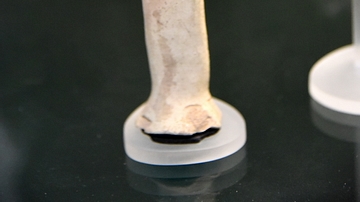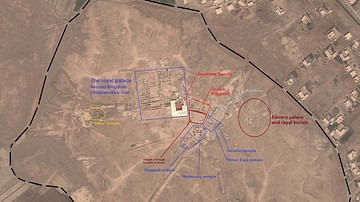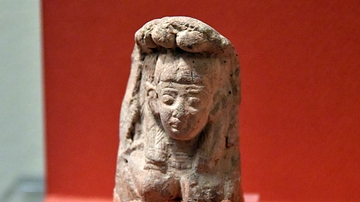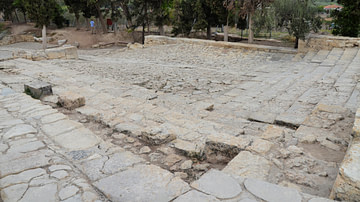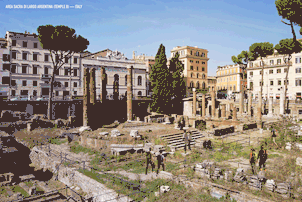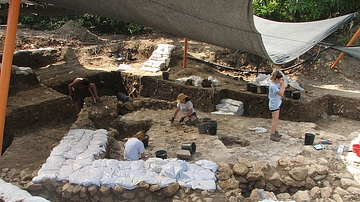Illustration
During the late 3rd millennium BCE, the area of the middle Euphrates developed a distinctive regional culture. Between 1963-1973 CE, an international rescue mission excavated a large number of sites in this region which were threatened by flooding as a result of the construction of the Tabqa dam. One such site was Tell es-Sweyhat. Excavations by T. A. Hollad on behalf of the British School of Archaeology in Jerusalem revealed extensive early and middle bronze age occupation. Figurines with pillar bases, elaborate hairstyle and applied eyes and "scarves" are characteristic of the Tabqa-Euphraets area. The juglet with strainer, might, by placing in liquid, clamping a thumb over the mouth, withdrawing it and then gently releasing the pressure, have been used as a sprinkler. From Tabqa, Ar-Raqqah, modern-day northern Syria. Early Bronze Age, 2400-2000 BCE. (The British Museum, London)
About the Author
Cite This Work
APA Style
Amin, O. S. M. (2016, April 11). Sprinkler Pottery Figurine from Tabqa-Euphrates Area. World History Encyclopedia. Retrieved from https://www.worldhistory.org/image/4880/sprinkler-pottery-figurine-from-tabqa-euphrates-ar/
Chicago Style
Amin, Osama Shukir Muhammed. "Sprinkler Pottery Figurine from Tabqa-Euphrates Area." World History Encyclopedia. Last modified April 11, 2016. https://www.worldhistory.org/image/4880/sprinkler-pottery-figurine-from-tabqa-euphrates-ar/.
MLA Style
Amin, Osama Shukir Muhammed. "Sprinkler Pottery Figurine from Tabqa-Euphrates Area." World History Encyclopedia. World History Encyclopedia, 11 Apr 2016, https://www.worldhistory.org/image/4880/sprinkler-pottery-figurine-from-tabqa-euphrates-ar/. Web. 29 Apr 2025.



